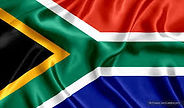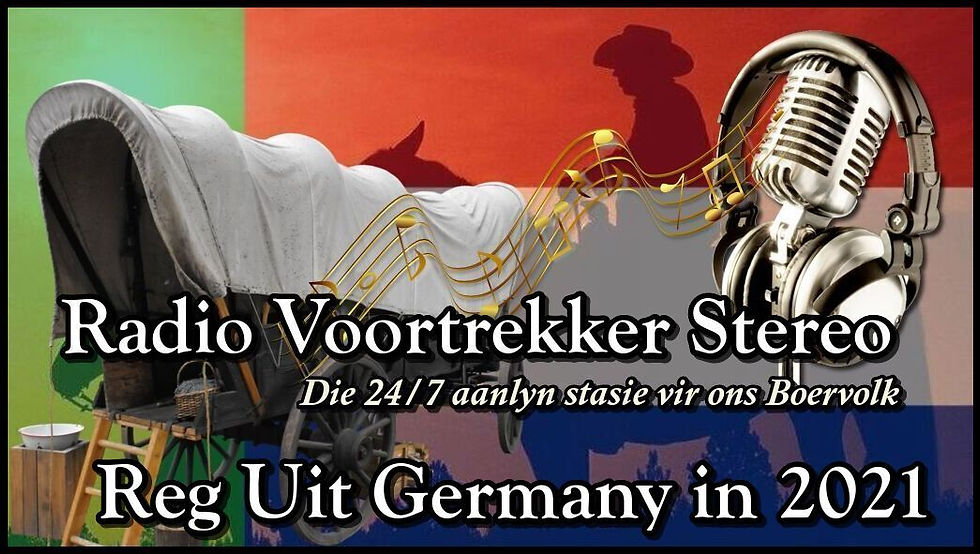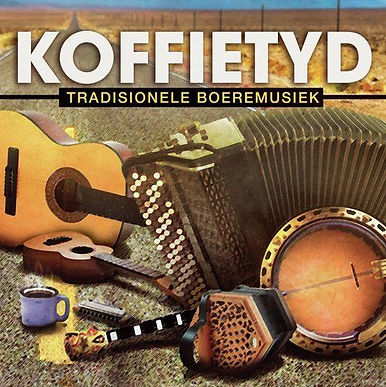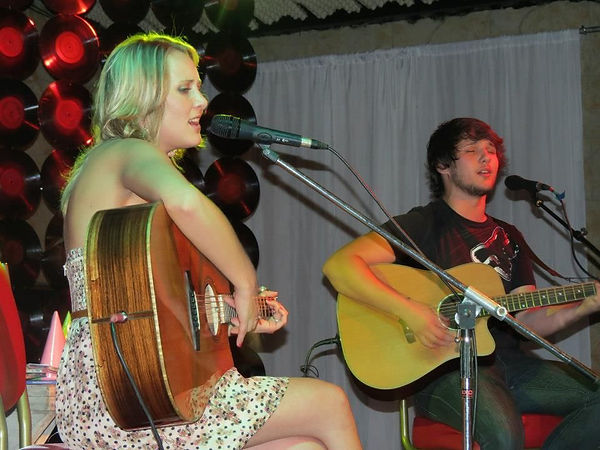









Hoofradiostasie-afskakeling
Radio SAM Broadcasting Studio Germany


BOERE MUSIEK
Boeremusiek (Afrikaans: ‘Boer music’ or 'Farmer's music') is a predominantly instrumental form of folk music that originated in South Africa. Initially intended to accompany informal social dancing, Boeremusiek developed through a fusion of European, African, and American musical traditions. While it remains a symbol of white Afrikaans-speaking South Africans, particularly among rural and working-class communities, the genre carries complex socio-political associations.
Boeremusiek evolved from a combination of 19th-century European dance forms like the waltz, mazurka, polka, and schottische, along with influences from indigenous South African music, blackface minstrelsy, and early 20th-century American and British dance hall music. Despite its hybrid origins, Boeremusiek became closely associated with white, Afrikaans-speaking communities, especially during the early 20th century and the apartheid era.
The term "Boeremusiek" was popularized during the 1938 centenary celebrations of the Great Trek, a key moment in the construction of Afrikaner nationalism. As part of this movement, efforts were made to preserve and formalize *boeremusiek* as a key part of Afrikaner cultural identity. One significant figure in this effort was Jo Fourie, who worked extensively in the 1950s to document and archive traditional *boeremusiek* tunes. Her recordings from rural communities have been instrumental in preserving the genre for future generations.
In earlier years, music-making was an activity that involved the entire household, including servants of different races, reflecting the colonial tradition of outsourcing musical entertainment. However, by the mid-20th century, Boeremusiek was reframed as an exclusively white Afrikaner genre, with its creole origins often downplayed or suppressed. As noted in The Groovology of White Affect by Willemien Froneman, Boeremusiek played a role in reinforcing racial categories in South Africa through its affective and cultural practices, although this aspect has not always been foregrounded in the genre's historical narrative
The lead instrument in most Boeremusiek ensembles is the concertina, sometimes referred to as "donkielong" (donkey's lung) due to its braying sound and mechanical playability. Its sound is often described as wailing or screeching, creating a powerful emotional resonance among players and listeners. The concertina is supported by instruments such as piano accordions, button harmonicas, guitars, banjos, pianos, harmoniums, and occasionally cello or bass guitar.
Boeremusiek bands typically perform informal instrumental dance music, with regional variations in style. For example, the sound of Boeremusiek in Potchefstroom may differ from that in Stellenbosch. While earlier forms of the genre included vocal elements, most Boeremusiek from the mid-20th century onwards is purely instrumental, with a typical song consisting of two 16-bar themes (known as 'draaie'). A contrasting section, colloquially called 'minors,' features fast concertina tremolos over lingering harmonies, encouraging dancers to whirl energetically.




Boeremusiek became a symbol of Afrikaner identity during the apartheid era, with its European roots emphasized at the expense of its African and creole influences. The president of the largest Boeremusiek organization in South Africa, the Boeremusiek Guild, argued in 1995 that Boeremusiek is "an extension of European civilization," reflecting the era’s racial and cultural ideologies. However, earlier forms of the music, including the guitar-driven "vastrap" beat, reveal clear connections to South African hybrid musical traditions, such as langarm and ghoema.Throughout the 20th century, Boeremusiek functioned as a marker of white, working-class Afrikaner identity. However, the genre’s informal and often bawdy lyrical content—dealing with themes such as alcohol abuse and poverty—stood in contrast to the Calvinist restraint promoted by Afrikaner elites. This tension was evident during debates about the genre in the 1930s, with some criticizing the "coloured" origins of popular songs like David de Lange’s "Suikerbossie" (1937), while others viewed Boeremusiek as a symbol of Afrikaner pride.
By the 1930s, Boeremusiek began to diversify into different strands. A more sophisticated, radio-friendly style, sometimes called "light Afrikaans music," emerged through musicians like Hendrik Susan, who led a polished "boer orchestra" that performed Boeremusiek with jazz influences. This form of Boeremusiek was embraced by Afrikaans cultural elites and became more widely accepted in urban and middle-class circles.
Nico Carstens, perhaps the most famous figure in Boeremusiek, rose to prominence with hits like "Jampotpolka" and "Warmpatat," blending Boeremusiek traditions with mainstream pop music. His accordion style, which incorporated techniques from Boeremusiek concertina playing, helped propel the genre into the South African music industry’s mainstream during the 1950s and 1960s.
‘Traditional’ vs. ‘Modern’ Boeremusiek
By the mid-20th century, the tension between "traditional" and "modern" Boeremusiek became a central debate within the genre. Traditionalists insisted on preserving the acoustic, minimalist style of Boeremusiek, while modernists embraced the use of electric instruments and more complex chord progressions. This divide was institutionalized in the 1980s with the founding of two rival organizations: the Traditional Boer Music Club of South Africa (TBK) and the Boeremusiek Guild (BMG).
The TBK, founded in 1981, focuses on preserving Boeremusiek’s original sound, promoting acoustic performances and rejecting electric instruments. The BMG, formed in 1989, allows for greater musical experimentation and embraces a more modern interpretation of Boeremusiek, incorporating electric guitars and drum kits into performances.
Boeremusiek in Post-Apartheid South Africa
In the post-apartheid era, Boeremusiek continues to be performed, though primarily within niche communities and among older audiences. Some artists have experimented with fusing Boeremusiek with other genres, such as Nico Carstens’s "boereqanga" project (1996), which combined Boeremusiek with mbaqanga. Bands like Radio Kalahari Orkes and Beeskraal have explored fusions of Boeremusiek with rock, while the concertina sound remains a nostalgic symbol in mainstream Afrikaans pop culture.
For example, Steve Hofmeyr’s song "DKW" (2010) evokes nostalgic imagery of Afrikaner farm life, with the concertina sound serving as an affective marker of a romanticized past. Similarly, Radio Kalahari Orkes’s "Heuningland" (2009) uses concertina to symbolize the Afrikaner connection to rural life, blending nostalgia with irony .Boeremusiek is a genre steeped in the history of Afrikaner identity and politics, but it also reflects the complex intersections of race, class, and culture in South African music. Its evolution from a hybrid form of folk music to a symbol of white Afrikaner nationalism complicates simple narratives about its origins and meanings.





Boeremusiek is a traditional Afrikaans music genre that originated in South Africa. It is characterized by its lively and upbeat tempo, with a distinct use of accordion, concertina, and violin. The lyrics are often sung in Afrikaans and tell stories of rural life, love, and the struggles of the Afrikaner people. Boeremusiek has a strong cultural significance and is often played at social events such as weddings and festivals. (AI Generated)
Parent genres: Folk/Acoustic . Traditional Music
Most popular boeremusiek artists
Valiant Swart en Ollie Viljoen
Hennie de Bruyn en die kitaarkêrels
Jan Brits and Chris Oberholzer
Die Kaapse Affodille Dames Boereorkes












